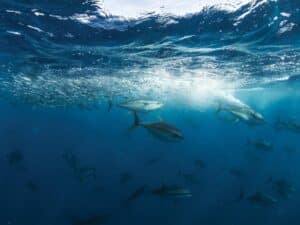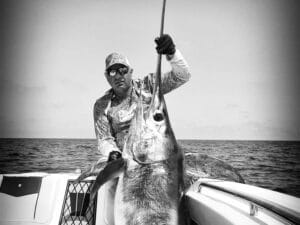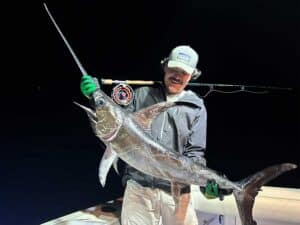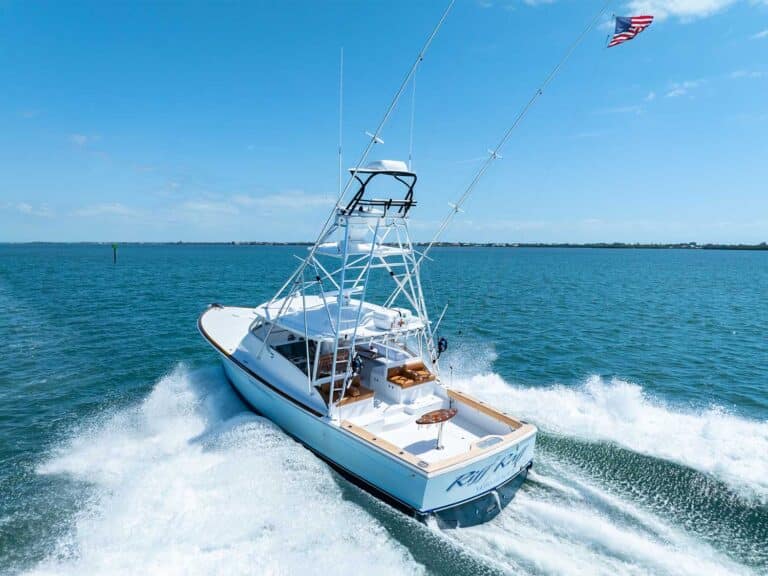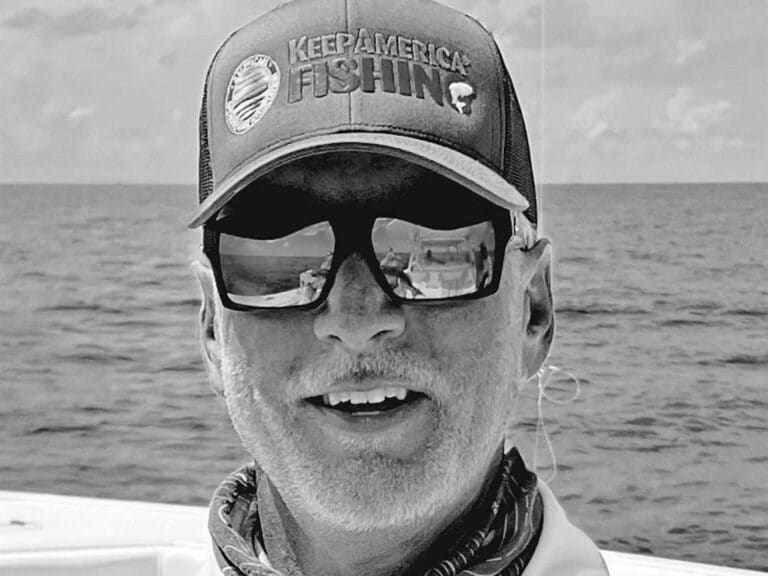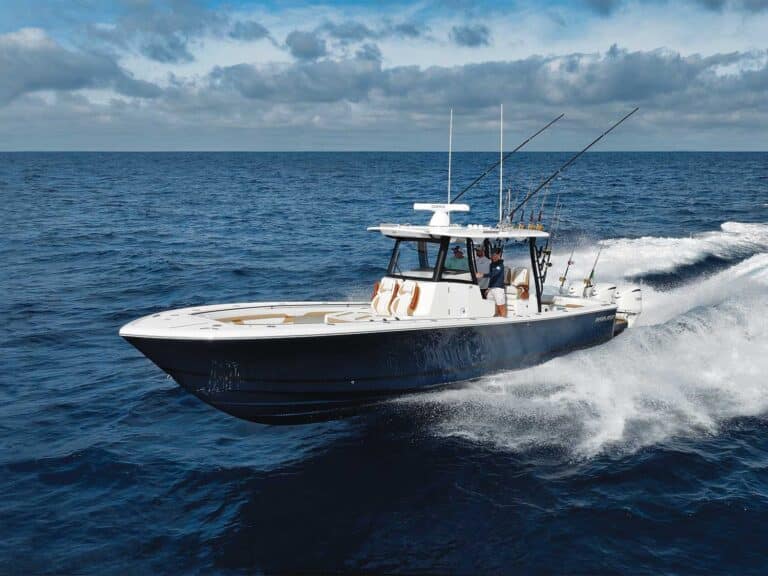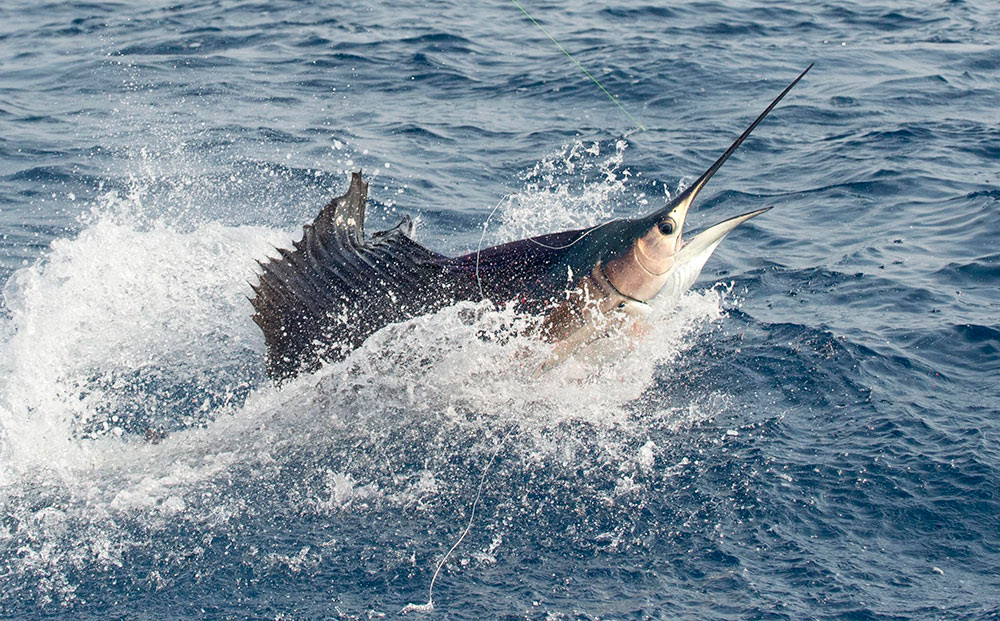
With a busy charter schedule that has them fishing seven days a week, Capt. Marty Lewis and his mate, Clint Rodamer, on Main Attraction, a 43-foot Torres based in Key Colony Beach, Florida, had been observing the conditions of the Gulf Stream, the meandering current that typically runs 30 to 60 miles offshore of the lower Keys. If there is one thing a charter captain from the Keys knows about, it’s the Gulf Stream – it alone can make or break a trip.
Little did they know just how well the fishing would be in the coming days.
A meandering current, the Stream will go in toward, and away from, the Florida Keys almost at will. It takes a lot of wind over long periods of time to move that body of water inshore, but eventually, it will give.
After many days of dolphin fishing, the Main Attraction crew saw that each day the Gulf Stream had been inching closer to Marathon, and based on his past experience, Lewis knows that when that current reaches 500 feet of water on his home turf, it’s time to start looking south. So, a few days ago he did just that, and it paid off. On a charter earlier in the week, Main Attraction caught 44 sailfish in a one-day trip off Sugarloaf Key – insane fishing to say the least, especially at the end of May.
At first, Lewis was hesitant to take the boat without paying customers, but when Rodamer suggested he’d find some friends and pay for the charter, Lewis, knowing full-well what could, or what was about to happen, agreed. After all, “You’ll never know if you don’t go,” he says.
Rodamer lined up his girlfriend, his sister, and Miami charter captain Jimmy David for what would be a day none of them will ever forget, even if they had to pay for it.
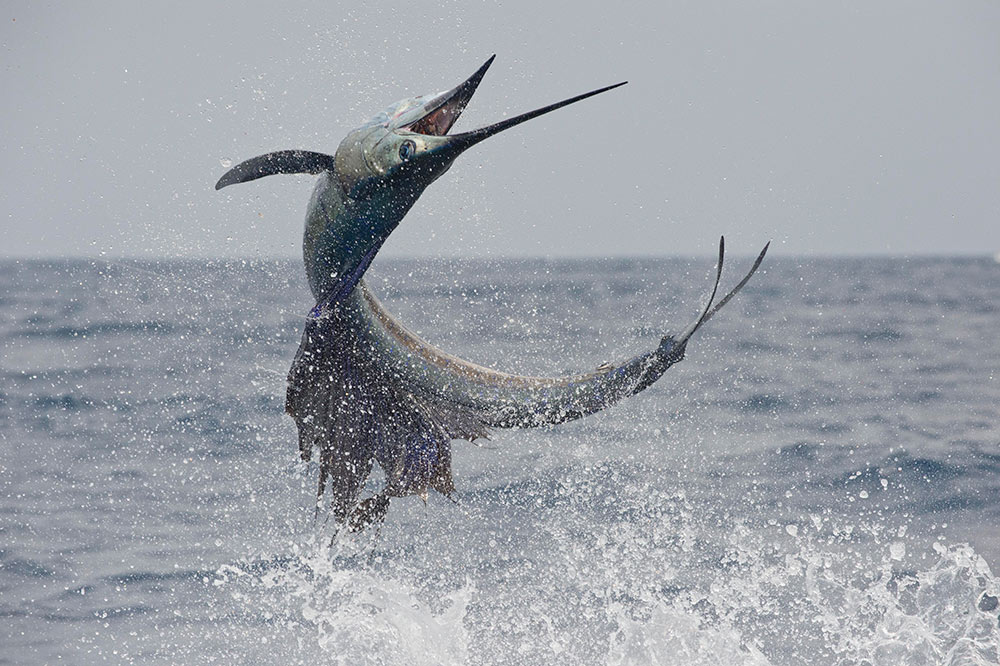
It had been raining the day they caught 44, and seeing the fish was difficult in the overcast conditions. Although the rain had let up on Tuesday, it was by no means sunny and Main Attraction was all alone. The crew could see the sails swimming downsea in the east wind, in tailing conditions the middle Keys usually gets in the wintertime. The wind was still blowing, the current had really pushed in and was running over three knots, and the water had that bright blue, marbled look. It was also rough.
Matthew Upton of Roffer’s Ocean Fishing Forecasting Service had some valuable insight. He watches ocean currents and trends for a living. “It had been so cloudy, getting a clear look at the ocean conditions via satellite was almost impossible, but based on the reports I had been getting from local-area fisherman, I’d say the cumulation of the Gulf Stream’s inshore location, it’s clarity, and the consistently-directional winds from the south pushing the bait and the Gulf Stream water inshore were part of the cause.” Not only does Upton’s theory gel with Lewis’, he offered up some addition information that normally would not be considered as far north as the middle Keys: “Based on the conditions last week, the further-than-usual southwest location of the Tortuga Gyre – a cooler, cyclonic-like current that presents in the southern Florida Straits off the Tortugas, along with the orientation of the Loop Current within the Gulf of Mexico, could cause effects on the Gulf Stream by allowing it to push closer to the Keys.”
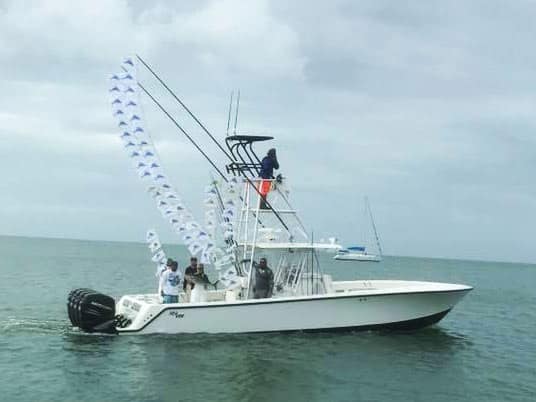
A later-than-normal arrival to Summerland Key proved to the crew it was not only the Gulf Stream causing these fish to bite so furiously, but it was also the tide that got this biomass of fish going. A few days before, they bit better after noon, and two days before, after one o’clock. And on Tuesday, they had racked up 35 sight-fishing releases at 3 p.m., and it wasn’t even good yet.
For the next few hours, the Main Attraction released almost another 30 sails, with a total daily tally of 61. Capt. B.J. Meyer on Silent Hunter, also fishing in the same area, released a total of 65 sailfish on the same day. Both teams capitalized on possibly the best billfish bite in the world, and certainly the best South Florida sailfish bite in recent history.
“It was like nothing I had ever witnessed before,” says Lewis. “They had to be mating, spawning – fluttering and rubbing against one another while free-swimming and never leaving each other’s side, even when we hooked up on doubles. After the run and jumps, they always found each other. It was incredible.”
